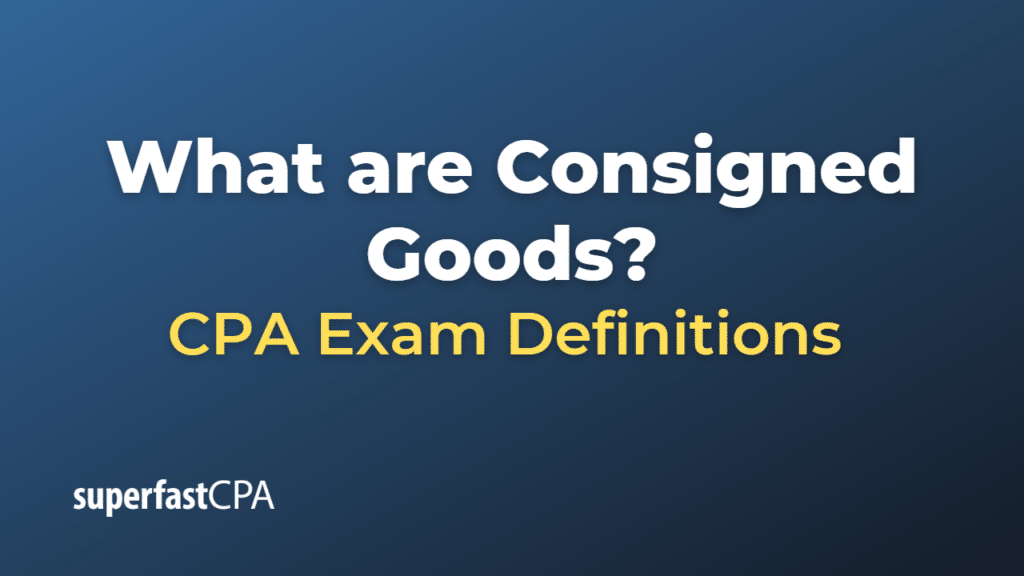Consigned Goods
Consigned goods refer to products that are delivered by a consignor (the owner) to a consignee (the agent) for the purpose of sale, storage, or shipment, without transferring the legal ownership of the goods. In a consignment arrangement, the consignee agrees to take possession of the consigned goods, display or store them, and attempt to sell them on behalf of the consignor. However, the consignor retains ownership of the goods until they are sold to an end customer.
The key features of consigned goods are:
- Ownership: The consignor remains the legal owner of the goods until they are sold to an end customer. The consignee merely acts as an agent or intermediary.
- Risk: The consignor usually bears the risk of loss, damage, or obsolescence of the consigned goods until they are sold. This means that if the goods are not sold or are damaged while in the consignee’s possession, the consignor may suffer the financial consequences.
- Payments: The consignee typically earns a commission or a percentage of the sales revenue for selling the consigned goods. Once the goods are sold, the consignee remits the proceeds (less their commission) to the consignor.
- Unsold goods: If the consigned goods remain unsold after a specified period, they may be returned to the consignor, depending on the terms of the consignment agreement.
Consigned goods are commonly used in various industries, such as art galleries, consignment stores, and retail businesses. The consignment arrangement can be beneficial for both parties: the consignor gets a wider audience and increased sales opportunities for their products, while the consignee does not have to invest in inventory upfront, reducing their financial risk.
Example of Consigned Goods
Let’s consider a hypothetical example to illustrate the concept of consigned goods:
Imagine Sarah, an artist who creates handmade pottery, wants to increase the visibility and sales of her artwork. She approaches a local art gallery, “Creative Space,” which is known for showcasing and selling the work of local artists.
Sarah and Creative Space enter into a consignment agreement, which outlines the terms and conditions for displaying and selling Sarah’s pottery. According to the agreement:
- Ownership: Sarah (the consignor) retains ownership of her pottery until it is sold to an end customer. Creative Space (the consignee) is responsible for displaying and promoting the pottery in their gallery but does not become the legal owner of the artwork.
- Risk: Sarah bears the risk of loss, damage, or obsolescence of her pottery while it is displayed in the gallery. If the pottery remains unsold or is damaged during the consignment period, Sarah may incur financial losses.
- Payments: Creative Space earns a 30% commission on the sales revenue of each piece of pottery sold. Once a piece is sold, Creative Space remits the remaining 70% of the sales proceeds to Sarah.
- Unsold goods: If any of Sarah’s pottery remains unsold after six months, the agreement stipulates that Creative Space will return the unsold items to Sarah.
In this example, Sarah’s pottery is considered consigned goods. The consignment arrangement allows Sarah to reach a wider audience and potentially increase her sales, while Creative Space can display and sell unique artwork without having to invest in inventory upfront, reducing their financial risk.













